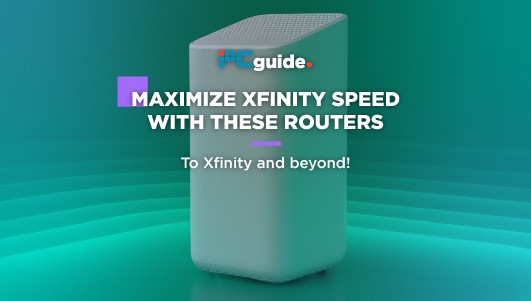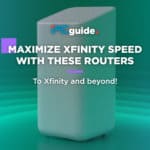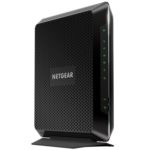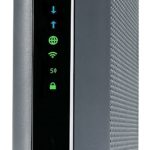Best Router For Xfinity in 2022

Are you fed up with forking out an extra monthly fee to rent Xfinity’s xFi Gateway modem and router combo? You’re not alone; the additional fee slapped on top of the monthly service costs and the fact you’ll never outright own the equipment doesn’t sit well with many Xfinity customers.
Buying your own router is a sensible way to not only secure a better router, and by extension, an improved internet experience, but also outright own one, unlike Xfinity’s expensive rental shenanigans, useful if you opt to jump to a different internet service provider in a year or two. Indeed, the router pays for itself fairly quickly.
With so many Xfinity compatible routers on the market, sorting through them to find one that suits your needs and budget can be a testing task for the unversed. In today’s guide, we’ll highlight a handful of the best routers for Xfinity users, giving you all the crucial information you’ll need to make an informed choice.
Products at a Glance
How We Picked
Sifting through dozens of options to settle on the best routers for Xfinity, we focused on factors such as speeds, signal strength and quality, Wi-Fi range and coverage, price, ports, integrated technology, and reliability. Doing so allowed us to find the cream of the crop of Xfinity-compatible routers.
We slimmed down our selection to five of the best routers for Xfinity that, in our estimation, outshine the rented xFi Gateway all-in-one combo at every turn. These cover a range of budgets, specifications, and speeds. We’ve found options for some of the most common use cases, from no-holds-barred options to more value-oriented options as well as router-modem combos.
Different living arrangements and home layouts require different router requirements, so if we missed out on a router that fits your specific use-case and you’ve found a winner, do get in touch in the comments section at the end of this guide.
Let’s dive in.
Best Router For Xfinity in 2022
- Up to 4000 Mbps
- Tri-band
- MU-MIMO technology
- RangeBoost and Beamforming
- Four LAN ports
- Speed excessive for most users
- Fairly pricey
If money is no object, the TP-Link Archer A20 is arguably not just one of the best Xfinity-compatible routers to buy but one of the best routers out there.
The router pushes top specifications, not least with a beastly theoretical speed of 4000 Mbps assured by a tri-band setup – 1625 Mbps on two 5 GHz bands and 750 Mbps on one 2.4 GHz band. Real-world speeds are likely much lower, but such a high ceiling gives you plenty of headroom even for the fastest Xfinity package available and future speed upgrades to the US broadband network. If anything, the speeds on offer here are a little excessive for most packages and home network requirements.
MU-MIMO, Airtime Fairness, Smart Connect, Quality of Service, RangeBoost, and Beamforming technologies ensure you can connect a gaggle of devices simultaneously without any detrimental impact on Wi-Fi signal strength and speeds even in large areas. The TP-Link Archer A20 is powered by a 1.8 GHz 64-bit CPU, three co-processors, and 512 MB of RAM to handle even the busiest home networks.
As for wired connections, the TP-Link Archer A20 has four LAN Gigabit ports (two can be used for Link Aggregation for a 2 Gbps wired connection), one WAN Gigabit port, one USB 3.0 port, and USB 2.0, which should cover the usual spread of home equipment including desktops, consoles, printers, and shared media drives.
The TP-Link Archer A20’s looks appear plucked from a sci-fi flick with a solid angular design and four prominent antennas, all bathed in a pleasing black finish. A little out there compared to the more conservative aesthetics of your standard router, but coherent enough to sit quite happily in most living rooms without standing out too much.
At just under $200, the TP-Link Archer A20 comes at a price. One that certainly feels justified but possibly a little high given the router caps out at 802.11ac Wi-Fi 5 with no Wi-Fi 6 support.
- Up to 1900 Mbps
- 1800 square foot Wi-Fi coverage
- DOCSIS 3.0 and 24x8 channel Bonding
- Four Gigabit Ethernet ports
- Compatible with Xfinity plans up to 800 Mbps
- Expensive
The Netgear Nighthawk C7000 makes our list as our runner-up for offering more modest specifications that align with the requirements of most average Xfinity users compared to the souped-up feature set and speeds of the TP-Link Archer A20.
Additionally, the C7000 is a top pick because it’s also a modem, saving you the hassle of buying a separate device if you go down the router-only road. So not only do you save on rental fees, but also significantly reduce the initial investment by buying a 2-in-1 device.
The Netgear Nighthawk C7000 can achieve theoretical speeds of up to 1900 Mbps, broken down over two bands: 600 Mbps on the 2.4 GHz band and 1300 Mbps per second on the Wi-Fi 5 standard. While these speeds trump most broadband package speeds, the Netgear Nighthawk C7000 is only compatible with Xfinity plans up to 800 Mbps, so those on the super-fast 1200 Mbps Gigabit Speed Internet plan may want to consider a different model to get the most out of their internet connection.
The modem side of things is well equipped with DOCSIS 3.0 24×8 channel bonding to ensure a reliable and steady relay with Xfinity for nippy speeds even at peak congestion. Throw in Beamforming+ tech, healthy 1800 square foot Wi-Fi coverage, a powerful 1.6 GHz processor, three amplified three dual-band internal antennas, and the Netgear Nighthawk C7000 offers a focused, reliable Wi-Fi signal throughout the home. On the unit itself, there are four Gigabit Ethernet ports and a single USB 2.0 port.
The absence of Wi-Fi 6 is certainly worth keeping in mind, especially as Netgear Nighthawk C7000 commands an asking price of just under $200. That said, for most Xfinity customers, this is a workhorse modem/router combo that’s both reliable, fast, and has the looks and footprint to meld seamlessly into most homes.
- Affordable
- Up to 1900 Mbps
- MU-MIMO technology
- Beamforming, Airtime Fairness, and Smart Connect
- Four Gigabit Ethernet ports
- No Wi-Fi 6
- Fairly basic features
Our money is on the TP-Link Archer A9 for Xfinity users seeking the best-value router out there. This affordable and humble router doesn’t revolutionize home networking but gets all the basics right, not least a dual-band setup that pushes 1900 Mbps, 600 Mbps on the 2.4 GHz band, and 1300 Mbps on the 5 GHz band.
Under the hood, the TP-Link Archer A9 boasts all the essential features you need for a solid and reliable Wi-Fi connection. There’s Beamforming to focus the signal on devices rather than beaming it out in all directions resulting in faster, steadier speeds; 3×3 MU-MIMO features like Airtime Fairness and Quality of Service; Smart Connect, which targets the most un-congested bands for optimal performance; and three external high gain antennas.
Additional welcome features include compatibility with Alexa voice control, easy setup and management through the free Tether app, four Gigabit Ethernet ports for wired devices, one Gigabit WAN port, and one USB 2.0 port.
Priced at $80, the TP-Link Archer A9 pays for itself in just under six months, compared to the $14 a month you’d be essentially throwing away renting an xFi Gateway from Xfinity for the duration of your plan. Naturally, you’ll need to factor in the cost of a modem, but even then, you’ll recoup the costs reasonably quickly.
The TP-Link Archer A9 lacks support for the Wi-Fi 6 standard, and the basic feature-set is a far cry from the more premium routers out there, but at this price point, these are reasonable omissions. After all, those looking for value aim for a balance of price and performance, not the cutting edge of home networking tech.
- Router-Modem combo
- Up to 1900 Mbps
- Xfinity certified
- DOCSIS 3.0 24x8 channel bonding
- Four Gigabit Ethernet ports
- Only support Xfinity plans up to 600 Mbps
Much like the Netgear Nighthawk C7000, the Motorola MG7700 is a two-birds-one-stone option. The unit contains both an Xfinity certified modem and Wi-Fi router, perfect for those that prefer a higher upfront cost but more savings down the line, not least by avoiding Xfinity’s monthly rental fees entirely. Motorola reckons you’ll save up to $156 a year, avoiding the monthly fees.
Similarly, it’s a top option for those that don’t want two separate units to power their home internet connection by condensing them down into a single sleek all-in-one box. The unit sits vertically to save space and should blend well in any home, thanks to its small footprint and grey/black color scheme.
The Motorola MG7700 can reach a maximum theoretical Wi-Fi speed of 1900 Mbps, breaking down to 1300 Mbps on the 5 GHz band and 600 Mbps on the 2.4 GHz band. Beamforming tech focuses signal on devices, while Wi-Fi Power Boost amplifies the signal to extend the range and ensure speeds regardless of the setup. 24×8 DOCSIS 3.0 channel bonding means you’ll get the most out of your ISP-delivered plan, too. On the unit, you’ll find four Gigabit Ethernet ports for wired devices.
While the Motorola MG7700 lands the stamp of approval from Xfinity, the router-modem combo is only compatible with Xfinity plans up to 600 Mbps. That’s not to say it won’t work with speedier packages, but you won’t reach the highest speeds available, something we suggest avoiding as you’ll be paying a premium for that speed boost.

Best Router For Xfinity in 2022
Things To Consider
Wi-Fi Range and Coverage
The strength and reliability of a router’s Wi-Fi signal depend on two factors: the layout of the space (home, office, etc.) and the Wi-Fi range. Obstructions such as thick walls and long distances between the router and devices can deplete the signal resulting in a choppy experience.
Routers tend to offer up to 150 feet as standard, but some can extend further, covering wider areas, especially when paired with extenders, small boosting devices scattered around a large area to ensure no dead zones. Buy according to the size and layout of your space. Though phone sockets limit where you can place a router, we recommend a central location in the home to offer 360-degree coverage, especially in larger homes.
It’s well worth overdoing it with a router with a large Wi-Fi range to err on the side of caution to avoid any nasty surprises. This does generally mean a higher price tag, but the investment is well worth it, considering it irons many potential hiccups that could cost you more in extenders in the long run.
Speed
Speeds advertised by manufacturers, while helpful to get a sense of the device’s capabilities, represent a theoretical maximum that most home network setups won’t ever attain. Real-world speeds will be generally lower, dictated by the speeds offered by your Xfinity package, the quality of the cabling between your home and the exchange, and in the case of Wi-Fi, the design and layout of your home.
The critical point to remember is that as long as the router’s theoretical speeds match or surpass the speeds offered by your Xfinity package, you’ll have everything you need to get the best experience. Unless you are paying for a business-grade package with very high, guaranteed speeds, most 1500 to 2000 Mbps routers more than suffice for most typical users, even those that dabble in bandwidth-heavy uses such as gaming and high-quality video streaming. You’ll save some money by opting for lower theoretical speeds while, in most cases, still benefiting from the best speeds possible from your ISP.
Do You Need Wi-Fi 6?
Even a cursory search for routers reveals that Wi-Fi 6 is the buzzword du jour littering every new manufacturer listing. The new standard is set to replace the 802.11ac Wi-Fi 5 standard but has yet to truly become a mainstream option chiefly because most devices currently in use don’t support the standard.
As such, there’s currently no need to rush out and spend substantially more on a Wi-Fi 6 ready router for most use cases. That said, over time, Wi-Fi 6 will become the most used standard. For those wanting to future-proof their setups, there’s logic in buying an Xfinity-compatible router with Wi-Fi 6, especially if you are investing now for the next few years.
If you already have a handful of Wi-Fi 6-ready devices (phone, PC, etc.) and a decent budget to play with, we recommend making the jump now, if only for the peace of mind of knowing you are ready and prepared.
Our Verdict
Our top pick among Xfinity-compatible routers is the TP-Link Archer A20. It can handle even the speediest plans with speeds up to 4000 Mbps, features tri-band Wi-Fi, plenty of desirable traffic and signal prioritization technology, and four LAN ports for your wired devices. No Wi-Fi 6 support and a high asking price sour the offering here, but this is still a top pick for those that want a no-compromise router for their Xfinity plan.
In the runner-up spot, we have the Netgear Nighthawk C7000. As a router-modem combo, it solves two problems facing those moving away from Xfinity’s unit. It offers theoretical Wi-Fi speeds up to 1900 Mbps, although it pairs best with Xfinity plans that don’t exceed 800 Mbps. Good 1800 square foot Wi-Fi range means this is a strong pick for larger homes.
For most Xfinity users, value is a prime consideration, and to that end, the TP-Link Archer A9 is a strong option for those that value a careful balance of price and performance. This router is the lowest priced among our picks but still proposes a strong, if basic feature set, including speeds up to 1900 Mbps, MU-MIMO features, four Gigabit Ethernet ports, and a comparatively affordable $80 price tag.
Finally, the Motorola MG7700 is another viable router-modem combo option. With speeds up to 1900 Mbps, DOCSIS 3.0 24×8 channel bonding, and the Xfinity-certified stamp of approval, it should do those on most plans nicely. However, please do note that it can only make the most of plans with speeds up to 600 Mbps.
With that, we’ll wrap up our guide to the best routers for Xfinity. We hope the above picks give you some food for thought as you make the wise choice of abandoning those draining monthly rental fees. Should you have any questions, concerns, or suggestions, don’t hesitate to get in touch by penning us a message in the comments section below.






